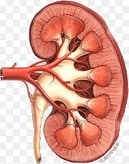
Human heart patch could repair dead tissue following heart attack
pharmafile | November 29, 2017 | News story | Research and Development | Duke University, heart, heart patch, human heart, pharma
A team of researchers and biomedical engineers at Duke University in North Carolina, US, have revealed that they have developed a fully functioning human heart muscle which can be manufactured large enough to patch over dead tissue caused by heart attack damage.
The heart differs from some other human organs in that it cannot regenerate following a heart attack as the scar tissue that replaces the dead muscle cannot receive or transmit the electrical signals necessary to contract and forcefully pump blood around the body. Known as heart failure, this condition affects over 12 million globally.
“Right now, virtually all existing therapies are aimed at reducing the symptoms from the damage that’s already been done to the heart, but no approaches have been able to replace the muscle that’s lost, because once it’s dead, it does not grow back on its own,” said Ilia Shadrin, a Biomedical Engineering Doctoral Student at Duke University and first author on the study. “This is a way that we could replace lost muscle with tissue made outside the body.”
While clinical trials are currently ongoing into how stem cells derived from bone marrow, blood or the heart itself can be injected into the organs in order to regenerate damaged tissue, understanding of the mechanisms by which this rarely achieves positive outcomes is thin.
Instead, research has been ongoing into heart patches, though for a sufficient medical solution they must be large enough and as strong and electrically active as the native heart tissue to allow electrical signals to pass through it. The new intervention developed at Duke instead is the first such patch to meet these criteria – it is 16 square centimetres and five to eight cells thick, and could even secrete enzymes and growth factors to promote the regeneration of damaged tissue.
“Creating individual cardiac muscle cells is pretty commonplace, but people have been focused on growing miniature tissues for drug development,” said Nenad Bursac, Professor of Biomedical Engineering at Duke. “Scaling it up to this size is something that has never been done and it required a lot of engineering ingenuity.”
The patch is built using human pluripotent stem cells – cells which can match any type in the body – and from these, necessary heart cells can be manufactured: cardiomyocytes, which are responsible for muscle contraction; fibroblasts, which provide structural framework for heart tissue; and endothelial and smooth muscle cells, which form blood vessels.
“This is extremely difficult to do, as the larger the tissue that is grown, the harder it is to maintain the same properties throughout it,” said Bursac. “Equally challenging has been making the tissues mature to adult strength on a fast timescale of five weeks while achieving properties that typically take years of normal human development.”
The team has proven the patch to survive, become vascularised and function in mouse and rat hearts. Now, in order to be utilised in human hearts, the patch will have to be much thicker – a challenge the team is now actively working on.
Matt Fellows
Related Content

FDA approves IMIDEX’s AI-powered device VisiRad XR
The technological pharmaceutical company IMIDEX has been granted clearance from the US Food and Drug …

Artiva Biotherapeutics announces FDA clearance of IND for AlloNK and Rituximab combo
On 16 August 2023, the US Food and Drug Administration (FDA) officially cleared Artiva Biotherapeutics’ …

Novartis acquires Chinook Therapeutics for $3.5bn
Swiss pharmaceutical company Novartis has entered into an agreement and plan of merger with US-based …








